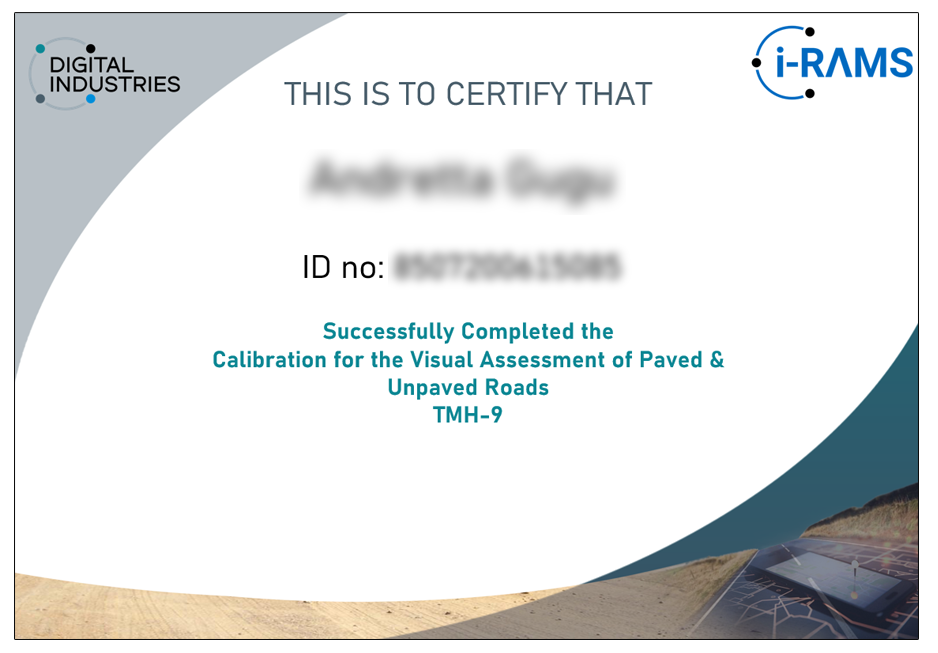Accredited Visual Road Assessment Training
Control Assessment
The accepted norm for the percentage of assets to be subjected to quality control surveys is 10% of
each inspector spread across 10% for each asset type. A quality control assessment on 10% of the asset register
needs to be verified using a “post rated” method guided by the prevailing standard for managing each asset type e.g TMH9
for roads in South Africa.
A “post rating” inspection method is whereby the visual condition is individually rated by two accredited assessors.
The two data sets are then validated against each other with exceptions being highlighted as a defect being rated too heavily or too light
in terms of degree and extent. An accuracy check is then done to establish logical exceptions between individual rating items e.g. check skid
resistance rating against texture.
Any inventory errors/ additions need to be noted for assessment feedback purposes but will not be rectified
in the data. A quality assurance index will be assigned to each assessor. The data is considered to be of acceptable quality if a score of 80%
or higher is assigned to each assessor's data. Unless mitigation factors need to be
considered which may affect the minimum acceptance threshold for example time, natural disasters, or any other notable
incidents that may affect the condition of the asset.

Road Assessment
The visual assessment of roads predated any other form of roads assessment.
Visual assessment is widely used as a measurement of the pavement’s surface, structural and
functional condition. This is the most common method of road condition assessment in South Africa
because of its effectiveness. Instrument surveys are used to supplement visual assessment information.
Visual assessment is designed to be fast, effective and as cheap as possible. Assessments are carried out by assessors
who physically traverse the road and record the road condition according to a rigid set of criteria. The criteria
are designed to record relevant material information, engineering information as it pertains to the surfacing and
structure of paved roads, functional condition as well as limited socio-economic factors for
the determination of various indices including but not limited to visual condition
index, structural condition index, surface condition index, functional condition index etc.
